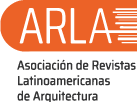Study of qualitative seismic vulnerability in armed concrete educational institutions in the Falcón State
Keywords:
seismic vulnerability, Prioritization Index, FUNVISISAbstract
The methodology for calculating the Prioritization Index for the Management of Seismic Risk in existing Buildings, came out as a result of the poor performance of structures that during the Cariaco 1997 earthquake, and the 1967 Caracas earthquake where the buildings collapsed, despite their apparent good state of conservation. In the case of four structures analyzed in this research, the Agustín Ocando Prosper School, the Agua Salobre Basic Bolivarian School, the Agustín Ocando Prosperous High School, and the Las Delicias Initial Education Center, these reinforced concrete buildings are located in the coastal zone of the Falcón State, in Venezuela, under the influence of the aggressive marine environment, and in the presence of the San Sebastian tectonic fault. The evaluation was carried out by applying the qualitative method of the Priority Index for Seismic Risk Management, verifying that the structures of the Agustín Ocando Prosperous School have a medium to high average vulnerability, however it is recommended to conduct detailed studies in modules 1 and 2 that have a very high frequency rating. For the Agua Salobre Bolivarian Basic School, the vulnerability index, corresponding to module 1, is medium high and the other group its classification is medium low; in Liceo Próspero Agustín Ocando modules 1 and 3 have a medium-high risk index and modules 1 and 3 are high. The Center of Initial Education Las Delicias, has the average risk index medium to low
Downloads
References
[2] O. López, A. Coronel, G. Ascanio, W. Rojas, R. Páez, V. Olbrich, F. Rengel, J. González, «Índices de Priorización de Edificios para la Gestión del Riesgo Sísmico» 3ra Versión, Informe Técnico, Funvisis, 002, 2014
[3] Comisión Venezolana de Normas Industriales COVENIN, «Edificaciones Sismorresistentes, Parte 1: Articulado, COVENIN 1756-1:2001» Fondonorma, Caracas, Venezuela, 2001
[4] D. Jáuregui, R. Rodulfo, «Evaluación de la vulnerabilidad sísmica en instituciones educativas tipo cajetón, ubicadas en la zona norte del estado Anzoátegui» Trabajo Especial de Grado, Universidad de Oriente, Anzoátegui, 2011
[5] A. Hassan, A. Sözen, «Seismic Vulnerability Assessment of Low-Rise Buildings in Regions with Infrequent Earthquakes» ACI Structural Journal, 94(1): 31-19, 1997
[6] E. Lozada, M. Villareal, «Caracterización de la sintomatología de fallas e identificación de condiciones de riesgo en el liceo Bolivariano Mario Briceño Iragorry y U.E.N, República de Costa Rica en Barquisimeto – Estado Lara» Trabajo Especial de Grado, Universidad Centroccidental Lisandro Alvarado, Decanato de Ingeniería Civil, 2013
[7] O. López, A. Marinilli, R. Bonilla, N. Fernández, J. Dominguez, G. Coronel, T. Baloa, R. Vielma, «Evaluación sismorresistente de edificios escolares en Venezuela» Revista de la Facultad de Ingeniería, Universidad Central de Venezuela, Vol, 25, No 4, 2010
[8] M. Díaz, Y. Rodríguez, «Evaluación cualitativa de la vulnerabilidad sísmica en edificaciones escolares situadas en la ciudad de Cabudare, Estado Lara y divulgación de información sobre recomendaciones en zonas sísmicas» Trabajo Especial de Grado, Universidad Centroccidental Lisandro Alvarado, Decanato de Ingeniería Civil, 2013
[9] J. Salas, Y. Sierralta, «Caracterización de la sintomatología de fallas e identificación de condiciones de riesgos sísmicos, geotécnicos e hídricos en forma cualitativa en la Institución E.B.N. Pablo Manzano Veloz», Trabajo Especial de Grado, Universidad Centroccidental Lisandro Alvarado, 2015
[10] M. Olavarrieta, F. Chong, K. Ramones, S. Garagozzo, E. Álvarez, J. Sánchez, A. Acero y L. Reinoza, «Caracterización de Fallas en edificaciones escolares, expuestas en ambiente agresivo M4 del Estado Falcón» Revista Gaceta Técnica, Volumen 17(1) pp, 61-80, enero – junio, 2017

Published
How to Cite
Issue
Section
The opinions expressed by the authors do not necessarily reflect the position of the editor of the publication or UCLA. The total or partial reproduction of the texts published here is authorized, provided that the complete source and electronic address of this journal is cited. Authors have the right to use their articles for any purpose as long as it is done nonprofit. The authors can post on the internet or any other media the final approved version of their work.






.png)




